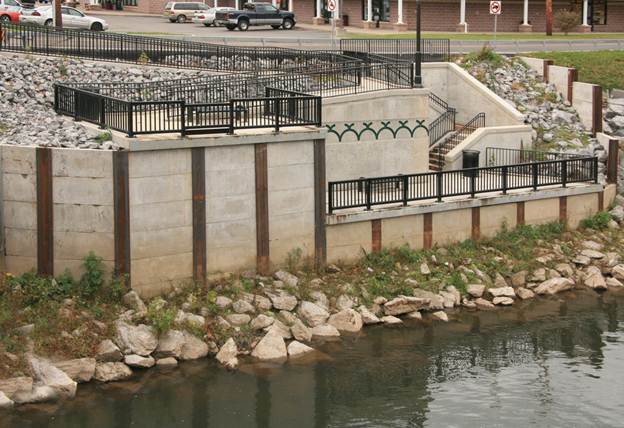
Originally constructed in 1940, the Center Street Bridge carries Route 353 over the Allegheny River in Salamanca, New York, which is located in the Allegany Territory of the Seneca Nation of Indians. The existing bridge had reached the end of its structural life and had several poor design features, including limited sight distances for eastbound left-turners, no shoulder, and a sidewalk on only one side. New York State Department of Transportation (NYSDOT) consulted with the Seneca Nation, U.S. Army Corps of Engineers, New York State Department of Environmental Conservation (NYSDEC), Seneca Nation Conservation and Environmental Protection Departments, and the City of Salamanca to develop, plan, and implement the project. Construction began in summer 2010.
The replacement bridge, opened in August 2011, is a four-span, multi-girder bridge that carries two traffic lanes, two wide shoulders, and sidewalks on both sides. These geometrics provide safe access for pedestrians, bicyclists, and snowmobilers in the area. The replacement project also includes a two-tiered fishing platform. The upper tier of this platform is accessible by ramps and is Americans with Disabilities Act (ADA) compliant, and the lower tier is accessible via stairs. These platform tiers provide close and safe access to the water for anglers and other enthusiasts.
In addition to the fishing platform, NYSDOT mitigated the adverse effects of removing the Center Street Bridge, a National Register of Historic Places-eligible structure, by integrating Seneca cultural aesthetics into the bridge. Numerous coordination meetings with the Seneca Nation were held during the course of the project, and the bridge incorporated several tribal aesthetic elements into the bridge design. The bridge’s interior and exterior concrete parapet walls, as well as the concrete walls of the fishing platform, have a green-colored Seneca Border Beadwork pattern. The eight street light poles along the bridge display banners highlighting the Seneca Nation, and the base under each of the poles has a metal medallion representing the eight Seneca Nation clan animals. In November 2011, at the ribbon-cutting ceremony, the current Seneca Nation President named the bridge after Seneca Chief Cornplanter, a Seneca war chief during the French and Indian War and the American Revolutionary War.
The Center Street Bridge project has also improved the surrounding ecosystem. The replacement bridge project created an enhanced habitat in the Allegheny River for the Eastern Hellbender, a salamander species classified as a “species of special concern” by NYSDEC. The plans were jointly developed by NYSDOT, the Seneca Nation Conservation and Environmental Protection Departments, and NYSDEC. This collaborative project improved transportation connectivity and addressed ecosystem restoration, producing lasting results and strengthening ties between the New York State Department of Transportation and the Seneca Nation.
For more information, contact Sanjay Singh, New York State Department of Transportation, Region 5, at sanjay.singh@dot.ny.gov.
